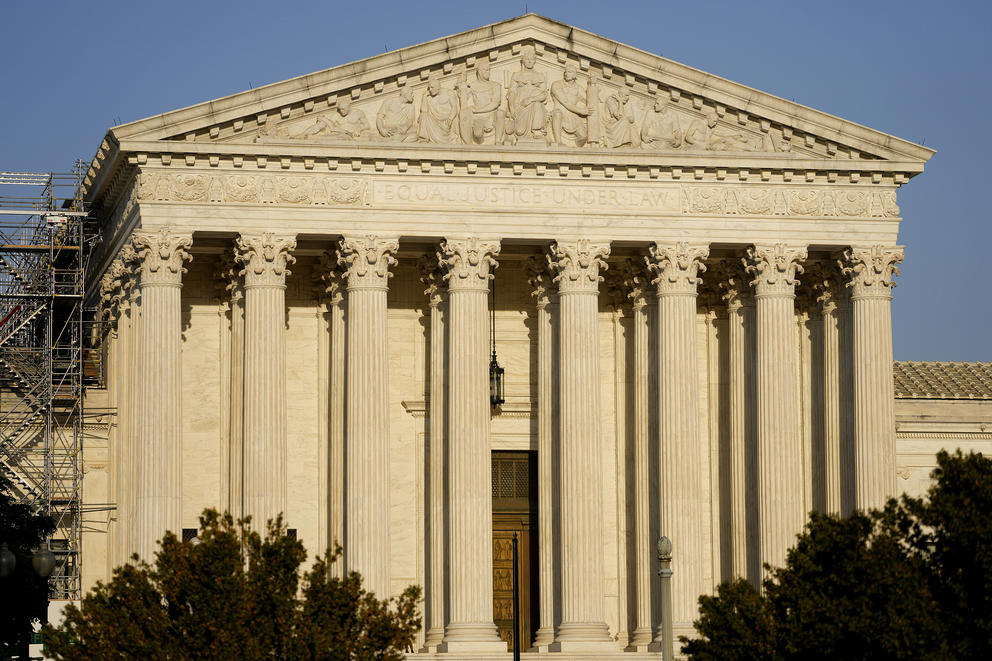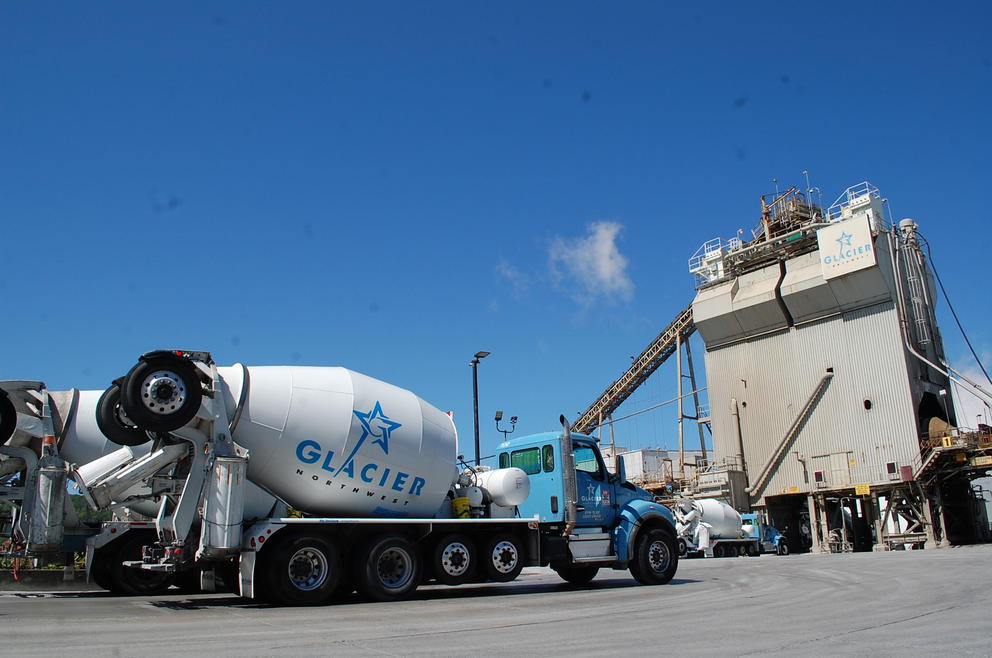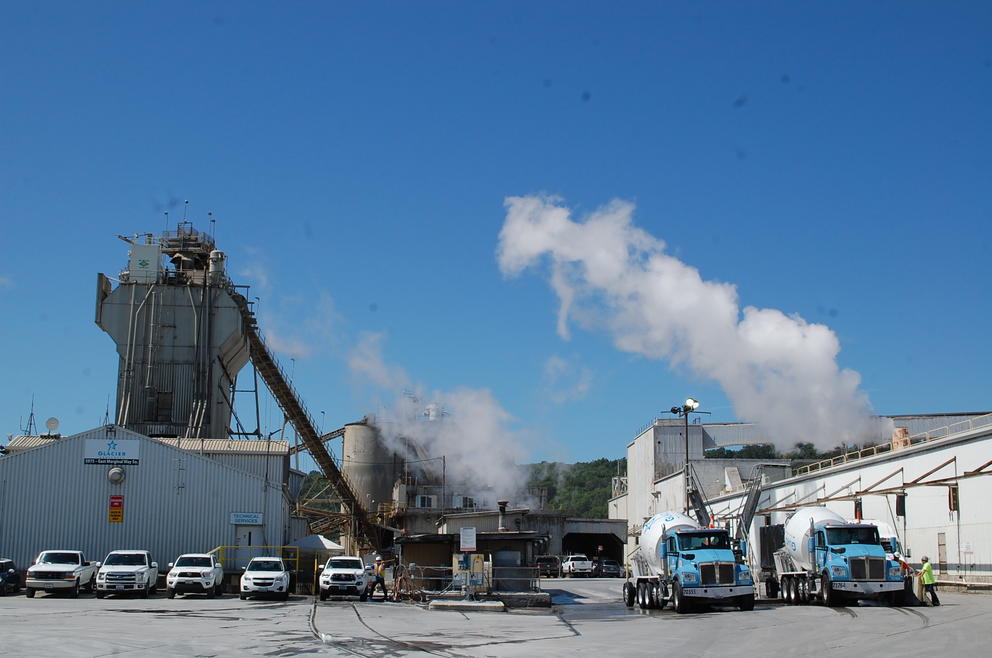What began as an acrimonious labor dispute and six-year court battle between Glacier Northwest and the International Brotherhood of Teamsters Local 174 came to a resolution last week when the U.S. Supreme Court ruled 8-1 in favor of the concrete company over union members. In a ruling written by Justice Amy Coney Barrett, the court overturned a Washington State Supreme Court ruling that had favored the Teamsters.
The case had been closely watched by both unions and corporations waiting to see if the conservative-leaning court would tip the balance more in favor of employers over workers. Though the Court ruled against the Teamsters, whether the decision sets much in the way of precedent is still an open question.
“The outcome wasn’t the catastrophe that unions feared,” said University of Minnesota law professor Charlotte Garden, a former professor at Seattle University who specializes in labor relations. “Though it does crack open the door to more employer lawsuits seeking to recover for strike-related product loss.”
In the summer of 2017, truck drivers employed by Glacier Northwest, which manufactures and delivers concrete and is owned by California-based company CalPortland, became frustrated with the pace of bargaining over a new contract. On Aug. 11, according to court documents, the drivers went on strike while mixing trucks were being loaded with concrete. Because concrete can harden and seriously damage trucks if left in them for too long, the company says it faced a crisis when 16 trucks loaded with concrete were left at the plant after drivers walked off the job.
Ultimately, managers and nonstriking employees successfully unloaded and saved the trucks, but thousands of dollars' worth of concrete was ruined. Soon after, Glacier Northwest sued the Teamsters for damages in a Washington state court. It was the beginning of a complicated and nuanced series of legal debates over how much responsibility labor unions have to prevent damage to an employer’s property.
All labor disputes in the U.S. are governed by the National Labor Relations Act, passed in 1935, which lays out a framework of acceptable and prohibited conduct on the part of employers and workers. Some actions by workers are protected – “the quintessential form of protected activity is a strike,” Garden said, “where workers withdraw their labor in order to pressure an employer to improve working conditions.”
Usually, disputes between employers and workers are heard by the National Labor Relations Board (NLRB). The U.S. Supreme Court, in the 1959 ruling San Diego Unions v. Garmon, affirmed that the board takes precedence over state courts. However, Garmon and other court rulings also established that when a union fails to take reasonable precautions to protect an employer’s property, they can be held accountable, and the usual process before the NLRB doesn’t apply.
What was at issue in this case is whether the Teamsters Local 174 took necessary precautions. Glacier Northwest claimed they didn’t, but a King County Superior Court disagreed, granting the Teamsters’ motion to dismiss the case. A state appeals court reversed that decision, and in December 2021 the Washington Supreme Court sided with the union and ruled that Glacier Northwest couldn’t sue for damages. The U.S. Supreme Court took the case and heard arguments in January.
Some of the justices’ questioning during oral arguments focused on what actions taken by unions are and aren’t protected by the National Labor Relations Act. Chief Justice Roberts noted during questioning that if milk in a grocery store spoils because workers aren’t there to sell it, the store can’t sue the union for the cost of the lost product. If, however, workers abandon a steel plant just as molten metal is being poured and the factory burns to the ground, the union can be held accountable.
“We agree that you can't burn down the factory, right?” Justice Ketanji Brown Jackson asked Darin Dalmat, an attorney representing the Teamsters, during oral arguments.
“We absolutely agree you cannot burn down the factory,” Dalmat replied.
Tim O’Connell, a lawyer at Stoel Rives who defends employers and focuses on labor law but who was not involved in this case, says last week’s ruling has the potential to more clearly define what is and isn’t protected activity on the part of unions. “Anytime you’re engaged in a pattern of intentional destruction of property,” O’Connell said, “that is something that’s not protected by the Act. And if it's not protected by the Act, then [an employer is] entitled to bring a damages action.”
Unions worry, however, that last week’s ruling could result in more harassing lawsuits by employers, creating a chilling effect on unions’ ability to strike. “No worker wants to sabotage and destroy the company,” said David Groves, a spokesperson for the Washington State Labor Council. “What they're asking for is a fair contract.”
“These corporations think that they can bury unions in an avalanche of legal fees and that maybe we’ll back down and not take such a hard line at the bargaining table,” Groves said, noting that his organization believes the National Labor Relations Board should continue to take precedence in these sorts of cases, not state courts.
Justice Jackson, who was the sole vote on the court in favor of the Teamsters, agreed, noting in her dissenting opinion that “Garmon makes clear that we have no business delving into this particular labor dispute at this time.”
Much of the case hinges on a small but important detail: When does the federal labor board obtain “preemption” over state court proceedings? Previous rulings, including Garmon, have asserted that if a union’s actions are protected, or even “arguably” protected, then the state courts must take a “jurisdictional hiatus.” Garmon allows the NLRB to investigate and rule for either the employer or union.
The Biden administration, in this particular case, took a middle ground, arguing that the NLRB should have been given more time to investigate before the state Supreme Court stepped in. “The Biden administration's position is not that the whole case should have proceeded but that there hadn't been quite enough process yet for the court to be sure whether or not the case was preempted,” said Garden of the University of Minnesota.
Two of the courts’ most liberal justices, Sonia Sotomayor and Elena Kagan, joined the majority opinion, which said, “the Union’s choice to call a strike after its drivers had loaded a large amount of wet concrete into Glacier’s delivery trucks strongly suggests that it failed to take reasonable precautions to avoid foreseeable, aggravated, and imminent harm to Glacier’s property.”
In a press release, CalPortland, which owns Glacier Northwest, said, “The decision confirms the well-established legal principle that a labor union cannot take affirmative steps to endanger or destroy an employer’s property in furtherance of a strike, and then claim such tortious acts are somehow protected by the National Labor Relations Act.”
The ruling could have been worse for unions, as evidenced in a concurring opinion written by Justice Clarence Thomas, which was joined by Justice Neil Gorsuch. In his opinion, Thomas questions the whole notion of preemption for the National Labor Relations Board, writing that “in an appropriate case, we should carefully reexamine whether the law supports Garmon’s ‘unusual’ pre-emption regime.”
This case did not do that, and still preserves the process, which is designed to give the NLRB more discretion than various state courts. Garden believes, however, that the ruling could give state courts more leeway, making things more difficult for unions in states hostile to them. “[Those states] will read what the court said about unions’ obligations to take ‘reasonable precautions’ more broadly,” Garden said, “and unions in those states will have to either contend with lawsuits or take precautions (like giving the employer advance notice of the strike) that will make their strikes less effective.”
O’Connell, the corporate employment attorney, says the ruling is a moderate one that provides clarification about what sorts of union activity isn’t protected. “We all accept the big picture that the union cannot engage in conduct that fails to protect property from imminent foreseeable harm. This case, I think, will help us draw lines on where that conduct is.”
Garden, however, believes this can be seen as another of many recent setbacks for unions. Despite renewed interest in unions nationally and locally, she says, membership is at an all-time low. Nationally, about 10 percent of workers belong to unions, down from a peak of 35 percent in the 1950s. She says that even when workers do succeed in forming a union, it can be difficult to translate that into higher wages or benefits. “Starbucks is kind of a poster child for this,” Garden said.
For a year and a half, workers at the Seattle-based coffee chain have begun to form unions, with about 100 stores in the U.S. now unionized. Starbucks has been accused of closing stores, firing striking workers, and offering increased benefits to non-union workers. “Starbucks doesn't care that much if there's a strike at one store,” Garden said. “They're happy to weather that if what they get is not negotiating a contract that gives workers some wins and inspires other workers to unionize and pursue the same deal.”
In a press statement released by Teamsters Local 174, attorney Dalmat said, “Although we’re disappointed in [the] result, the Court’s opinion leaves intact both the federally protected right to strike and the basic framework for determining when labor disputes should be decided by the National Labor Relations Board instead of state courts.” Dalmat expressed relief the Court did not overturn the notion of preemption, and that the NLRB is still empowered to hear most labor disputes.
What happens next for this particular case is unclear. The labor board is reviewing a separate complaint of anti-union activity by Glacier Northwest in its dispute with the Teamsters, and the Washington Supreme Court will now have to decide if a lawsuit against the union will proceed.
“The NLRB case will definitely continue,” Garden said in an email. “The question is what happens to the state court case.” She thinks it’s possible the state Supreme Court will find another reason to argue that the case is preempted – in particular, the existing labor board complaint. That in turn could prompt another round in the U.S. Supreme Court, something Justice Alito alluded to in a footnote to his concurring opinion: “If the state courts on remand dismiss this case on that ground, the decision, in my judgment, would be a good candidate for a quick return trip here.”
Groves says the ruling is just one of many efforts by conservative courts and legislators to weaken the collective power of workers, saying the goal is “to create restrictions on the right to strike and to try to have more control over labor and undermine the effectiveness of unions.”
By increasing employers’ ability to sue unions for damage to property, the ruling potentially opens the door for a more generous interpretation of what that property is, and puts the burden on unions to ensure that a company’s property isn’t damaged.
“If, say, journalists go on strike in October 2024, a paper would lose revenue because people aren't buying it in the run-up to the election,” she noted. “Does that mean the employer ought to be able to sue and say: You had to strike during the slow news period?”
In a statement from the Teamsters Local 174, driver Mark Hislop, who was one of the union members who participated in the strike in Seattle in 2017, says his union was frustrated by the company’s lack of good faith bargaining, leaving them no choice but to walk off the job. “They’ve been coming after us in court ever since,” Hislop said. “As far as I’m concerned, today’s decision changes nothing for us Teamsters, and it will not stop us from fighting as hard as we can for strong contracts.”





